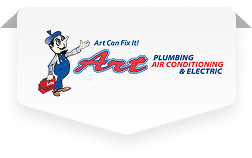Coral Springs Pipe Relining Services
Restore Your Sewer Lines Without Digging
When underground pipes crack, corrode, or collapse, traditional repairs can be disruptive and expensive. Pipe relining offers a modern, trenchless solution that restores damaged pipes from the inside without digging up your yard or breaking through slabs. At Art Plumbing, Air Conditioning & Electric, we provide professional pipe relining services in Coral Springs for homeowners looking to avoid the mess of excavation. Using a cured-in-place pipe (CIPP) method, we create a new, durable pipe within your existing one. It’s fast, clean, and long-lasting—perfect for sewer lines, drains, and more.

Our Residential Pipe Relining Services
Relining is ideal for repairing sewer and drain lines suffering from cracks, leaks, root intrusion, or corrosion. We begin every job with a sewer camera inspection to assess the condition of your pipes. If relining is the right solution, we thoroughly clean the line—often using hydrojetting—and insert a resin-saturated liner into the pipe. Once cured, this liner forms a new pipe that seals out leaks and restores flow. It’s one of the most efficient and cost-effective trenchless repair methods available today.
- Cured-in-Place Pipe (CIPP) Lining: We use CIPP technology to form a seamless, joint-free replacement pipe inside your old line. It seals cracks, stops leaks, and improves long-term performance.
- Sewer Line Relining: If your main sewer line is damaged but still structurally sound, we can reline it without digging, restoring service with minimal disruption.
- Drain Pipe Relining: We repair interior or exterior drain lines with trenchless relining, helping prevent backups and costly replacements.
- Pre-Relining Camera Inspections & Cleaning: We inspect and prepare each pipe thoroughly to ensure proper liner installation and curing.

Get started with service you can trust
Why Choose Art Plumbing, Air Conditioning & Electric for Pipe Relining in Coral Springs?
Relining requires expert precision, and our team is fully trained in the latest trenchless pipe repair methods. At Art Plumbing, Air Conditioning & Electric, we provide reliable solutions that extend the life of your plumbing system without disturbing your property. Whether it’s a cracked drain under your slab or a deteriorating main line in your yard, we’ll assess your options and recommend the best course of action. Coral Springs homeowners count on us for honest service, advanced tools, and long-lasting results. We fix the problem—without the mess.
- Non-Invasive Trenchless Technology: No need to dig up driveways, floors, or landscaping. Our method repairs pipes from the inside out.
- Fast Turnaround Time: Many relining jobs are completed in one day, minimizing inconvenience and plumbing downtime.
- Long-Lasting Results: Cured-in-place liners are highly durable and corrosion-resistant, lasting up to 50 years or more.
- Ideal for Many Plumbing Systems: We reline sewer lines, drain pipes, and even some water lines with minimal disruption.

Financing Options
Service Request
Frequently Asked Questions


schedule your service with us today
Whether you need a quick repair, a full system installation, or routine maintenance, our team is here to help—on your schedule. We offer same-day service, honest pricing, and expert solutions tailored to your home or business. Don’t wait for small issues to turn into big problems—let us take care of it with the professionalism and care you deserve. Contact us today to book your appointment and experience the Art difference.
